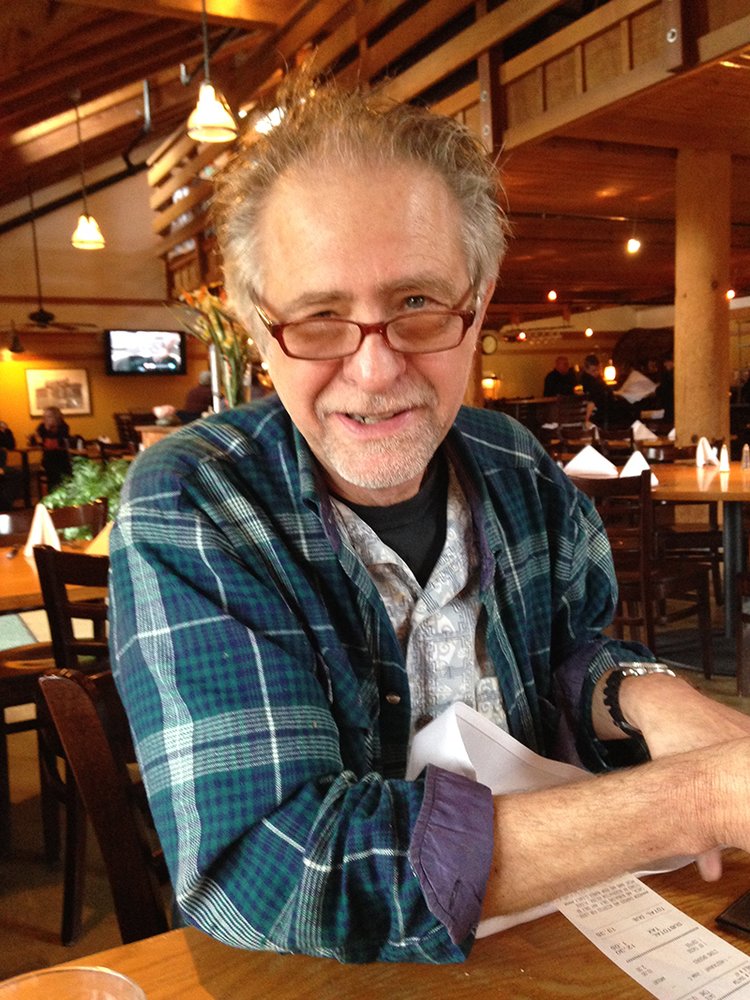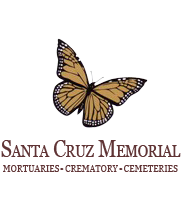






Obituary
Obituary of Alan Eugene Bartz
Please share a memory of Alan to include in a keepsake book for family and friends.
There’s an ancient parable about a group of blind men making their way through the jungle. One day they encounter a creature entirely unknown to them: an elephant. One by one they cautiously approach the beast, trying to make out what it is. The first blind man grasps the animal by its trunk and exclaims, “Why, the elephant is like a snake!” The second blind man catches hold of one large, flat ear and says, “No, the elephant is more like a fan.” The third blind man lays his hands on the great beast’s side and observes: “I think the elephant is very much like a wall.” And so on. None of the blind men is wrong, but none of them is entirely right either. Each makes the mistake of assuming that the small part of the animal he’s touched accounts for the whole.
I’d rather not make that mistake with my younger brother and only sibling, Alan. Though I knew him well for the first 18 years of his life, things get murky after that. Still, it’s only right that I speak first…
Alan and I were born in Santa Cruz, California, and raised in a semi-rural area of Scotts Valley. We lived in a spacious wood-framed house set in the midst of fruit orchards. We shared a bedroom, and once I’d accepted him, rarely fought. We had plenty of games, electric trains and stuffed animals. But the grand allure was outside: apple trees to climb, dirt clods to throw, grassy hillsides to slide down and shady redwood groves to get lost in. There were neighbor kids our own age to play with. We were loved, and it was paradise.
Dad was a journeyman carpenter and cabinetmaker and a man who could build or repair almost anything. Mom was a homemaker, a great cook, expert seamstress and soother of tears. They both volunteered for Little League baseball and scouting activities. Between the two of them, they kept us together body and soul. The pets helped too: a couple of dogs, a turtle with a painted shell, a rabbit named Silver and a succession of housecats. Alan loved the cats best.
It was at Soquel High School that Alan’s intrinsic character began to emerge. He had little tolerance for arbitrary rules and regulations and little genuine interest in anything that was not related to music or mechanics (an extra credit course in electronics taught by Mr. Harlamoff was the one exception). Several times a week, Alan played guitar and sang in a garage band with new friends Eric Hoffman and others. Though he preferred this to academics, Alan was still more than bright enough to graduate at the top of his class in June 1971. That fall he entered the engineering program at California Polytechnic State University in San Luis Obispo….
But I’ve said enough, and there are others waiting to pick up the story. Tom Walton, the original owner of Guitar Works in Santa Cruz, is one of them. In 1972, about a year after Alan left for college, the two of them had a chance meeting at Freddy Fast Gas in Scotts Valley.
Tom: "Why are you working at a service station, Alan? I thought you were down at Cal Poly."
Alan: "I was. But when I tried to sign up for calculus, they told me I had to take a gym class first. So I quit."
Tom: "Well, then quit again. Give your boss two weeks notice. I need you at Guitar Works."
Although Tom had known Alan primarily as a customer at Music Box, his old gig, he was convinced that Alan could learn anything he set his mind to. In those years, Guitar Works was quickly expanding to meet the needs of working rock ‘n’ roll musicians. Tom was looking for bright young minds to manage electric guitar and amplifier repair for him. Alan worked shoulder to shoulder with Rick McKee, another player and budding technician on the Santa Cruz scene. According to Rick, Alan quickly became proficient at diagnosing and repairing problem amps. Before long he was making simple modifications to improve their sound and reliability. Word of his prowess got around, and in the mid 1970s Alan was drafted for several stateside tours with the Doobie Brothers. These were followed by three international tours with Bob Dylan (1978-1981) and one final extended tour with the Doobies in 1982. Although Alan also did a short stint in the audio visual department at UCSC, he was mainly focused on absorbing everything he could about touring and the presentation of live music on the road.
In about 1984, Alan leaped at the chance to leave Santa Cruz and work for Matinee, a Reno-based bar band with a loyal regional following. Matinee had a dependable funding source and aspired to record with a major label. Alan was hired to be the band’s sound engineer. Once they hit the road this role expanded to include equipment repair and management. Ronda Chatelle, who did the band’s bookings and promotion, is a veteran of the live music scene. In her words, “Alan was instantly likable, playful and very funny. He was a grounding force in that band and the best damn live sound engineer I ever heard. Years later, I’d be in some club listening to a band that was just crippled by dreadful sound, and I’d think ‘Where’s Alan when we need him?’”
Tim Manfredi, who was one of Matinees two keyboard players, offers another take on Alan’s skills: “Alan was always surprising me with his brilliant solutions to problems. He was like MacGyver. I remember one time we were returning on a long haul from Denver when the gearshift lever in the equipment truck broke. It looked bad. But Alan figured out a way to access the transmission and used a wrench to shift the gears while another guy drove the vehicle. It was unbelievable what he could do!”
After Matinee folded in late 1987—the victim of internal squabbling—Tim and Alan remained good friends and moved into the basement of a large home in Reno. The basement was divided into two apartment units. Alan adopted a cat named Adderley and the three of them shared this unique environment. “Alan had a funny name for us,” Tim laughs. “Since the unit was below street level, he called us C.H.U.D.s after the horror movie: Cannibalistic Humanoid Underground Dwellers!”
For Alan, it was a time for new directions. At age 36 and disillusioned by years of fruitless labor in the music business, he made the decision to return to school and obtain the engineering degree he had originally sought. Starting at Truckee Meadows Community College in 1989, he eventually transferred to the University of Nevada at Reno. These were hard years for Alan. He had been away from school for a long time and everything had changed in the field of education. He also learned that he had type 2 diabetes. But Alan persevered, receiving a Bachelor’s in Electrical Engineering in December 1993. Not surprisingly, his subconscious mind continued to ruminate on music as he had a dream about a circuit that would allow tube amplifiers to run cooler without affecting their tone. Uninterested in pursuing the patent application process, Alan gave the idea to the University. But he also filed it away for future use in his personal quest to build the perfect amp.
With an engineering degree in hand, Alan began work at Bently Nevada, located south of Carson City in Minden. Bently’s products are widely used to monitor and protect the operation of industrial machinery. While this was not the type of work that Alan had hoped for, it was an intellectual challenge and he made a commitment to do his best. Over the next few years, Alan learned to grapple with computers and absorbed the mantra to “document everything.” In 1998 he put down roots, buying a house in nearby Gardnerville.
Things changed in January 2002 after General Electric acquired Bently. The work environment became more bureaucratic and even less to Alan’s liking. As Mark Brown, an old friend from Guitar Works and Doobie Brothers days, observed: “Alan seemed ragged around the edges and basically lost to me. He was ignoring his diabetes, and he didn’t seem to know what he wanted to do or what people expected of him.” Alan lost his job at General Electric in June 2002 for reasons that remain unknown.
While visiting Tim Manfredi and his family in Las Vegas in March 2004, Alan experienced a near-fatal staph infection. After 10 days in the hospital, Alan returned to Gardnerville and endured another six weeks of intravenous antibiotics. At that point, having sold his house and with no job, Alan was forced to return to Santa Cruz. In poor condition on arrival, Alan received good care from his mom (who had moved to mid county) and eventually recovered his strength. However he was still ignoring the increasingly dire warnings of physicians regarding his out-of-control diabetes.
Needing to work, Alan formed a partnership with old friend and master amp technician Jack Smith who owned what became West Coast Tube Works. When Jack died in 2008, Alan took over the business, doing countless jobs for local and regional musicians as well as repairs for retail outlets that lacked his expertise. In his spare time, Alan fine-tuned his personalized amplifier modification, the “Luster Mod,” with ideas adapted from his dream.
It was during this period of time that Alan befriended his neighbors, Carol and Bill Heinze, who admired Alan’s good nature, technical savvy and offbeat wit. This was a friendship that would endure and grow stronger in the years ahead, especially after Alan’s mom died in 2011. Alan had experienced a lot of craziness in is life. Carol and her family were just what he needed. “Alan would always say to me: ‘Carol, you’re just so normal!’”
In September 2015, Alan threw a large party to celebrate the completion of “Zack’s Water Garden Fountain,” a deluxe outdoor watering hole for his cat Zachary that had originated in a dream. Naturally, it was designed and built by Alan himself (carpenter, stone mason, tile setter, hydraulic engineer), and just as he had been taught at Bently, thoroughly documented in photos and schematics. The human guests at this event included Alan’s family and many old friends like Eric Hoffman, Rick McKee, Mark Brown and Doree MacRae.
Three days later, Alan suffered a stroke that almost completely paralyzed the right side of his body.
Taken by helicopter to Stanford Medical Center (“I would have enjoyed the ride under different circumstances!”), Alan was given clot-busting drugs and started on a program of physical therapy. Once released, Alan conquered his diabetes and made healthy living a priority. He dove into recovery with every fiber of his being, quickly relearning to talk and eventually to walk with the use of a cane. What’s more, according to old friend and fellow road warrior Dennis Scrimo, Alan always maintained a positive outlook: “He never complained about anything, man. He never got angry. He just carried on and did the work.” One of Alan’s long-term physical therapists agrees: “I was always impressed by Alan’s determination. Even after the neurologists told him that he was unlikely to get any better, he wanted to continue therapy. In my experience, that’s very unusual.”
In the last five years of his life, Alan’s number one priority was stroke recovery. This was complicated by a diagnosis of advanced kidney disease, and in the last months of his life, stage 4 pancreatic cancer. Through it all, there were things that Alan was able to do—he even managed to attend a 2018 concert by Roger Waters in Guadalajara, Mexico—while there were others that were left undone. With the assistance of Carol Heinze, Alan continued to do some amplifier repair, and with the assistance of Augustin Rodriguez, he continued to tinker with his beloved 1969 Datsun 2000 sports car.
Those who spent time with Alan during these years noticed a softening in his personality. He was, for example, more patient and understanding of others with disabilities. Seeing the world from a wheelchair will do that. Alan’s friendship with Carol played an enormous role in this change. She supported and encouraged Alan in a way that no one else could have. Without Carol’s unfaltering love and loyalty, Alan would not have lived as long as he did.
So who was Alan Eugene Bartz? Like the elephant in the parable, he was many things to many people, each of them true but none of them definitive. Only God knows the whole story! Still, Alan’s finest qualities were in plain view. First, he had a singular gift for mechanics, especially amplifiers.
Rick McKee: "For amp repair, Alan was the best."
Mark Brown: "Alan, in any mode, was brilliant with technology."
Bill Walker: "Alan was a player first who also happened to be an amazing technician. He and I shared a love of the sound of the electric guitar through a great amp."
John Brunell: "Alan was about creativity. Sure he had science behind him, but his stuff was also beautiful."
David Handloff: "Alan could have been famous for his work. He should have been. But he was shy and unassuming, and he didn’t care about that."
But even more important than his mechanical gift, Alan had a good heart. His close friend Doree MacRae puts it best: “Women value kindness in a man above all else. I knew Alan for 45 years and that’s what he was. He was always kind.”
Per his final request, Alan’s remains will be cremated and scattered in warm tropical waters. Charitable donations in Alan’s memory can be made to Hospice Of Santa Cruz County, 940 Disc Drive, Scotts Valley, CA 95066. Online donations: hospicesantacruz.org.
Sometime next spring or summer—after a safe and effective vaccine for the COVID-19 virus hopefully becomes available—the family plans to hold a picnic-style celebration of life for Alan. That way we can gather together and greet each other in the warm and affectionate way that Alan would have wanted.
To plant a beautiful memorial tree in memory of Alan Bartz, please visit our Tree Store

A Memorial Tree was planted for Alan
We are deeply sorry for your loss ~ the staff at Santa Cruz Mission Chapel
Online Memory & Photo Sharing Event
Ongoing
Online Event
About this Event

In Loving Memory
Alan Bartz
1953 - 2020
Look inside to read what others have shared
Family and friends are coming together online to create a special keepsake. Every memory left on the online obituary will be automatically included in this book.
Services for Alan Bartz
There are no events scheduled. You can still show your support by planting a tree in memory of Alan Bartz.
Plant a tree in memory of Alan
Santa Cruz Mission Chapel
1927 Ocean Street
Santa Cruz, CA 95060
Telephone: (831) 426-1601
California License FD#: 1476
COA #54 | CR#179
Email: info@scmemorial.com
Oakwood Chapel
3301 Paul Sweet Road
Santa Cruz, CA 95065
Telephone: (831) 475-2464
California License FD#: 1530
COA #53
Email: info@scmemorial.com
© All Rights Reserved |
Admin Login | Website powered by FuneralTech & TA | Privacy Policy | Terms of Use

